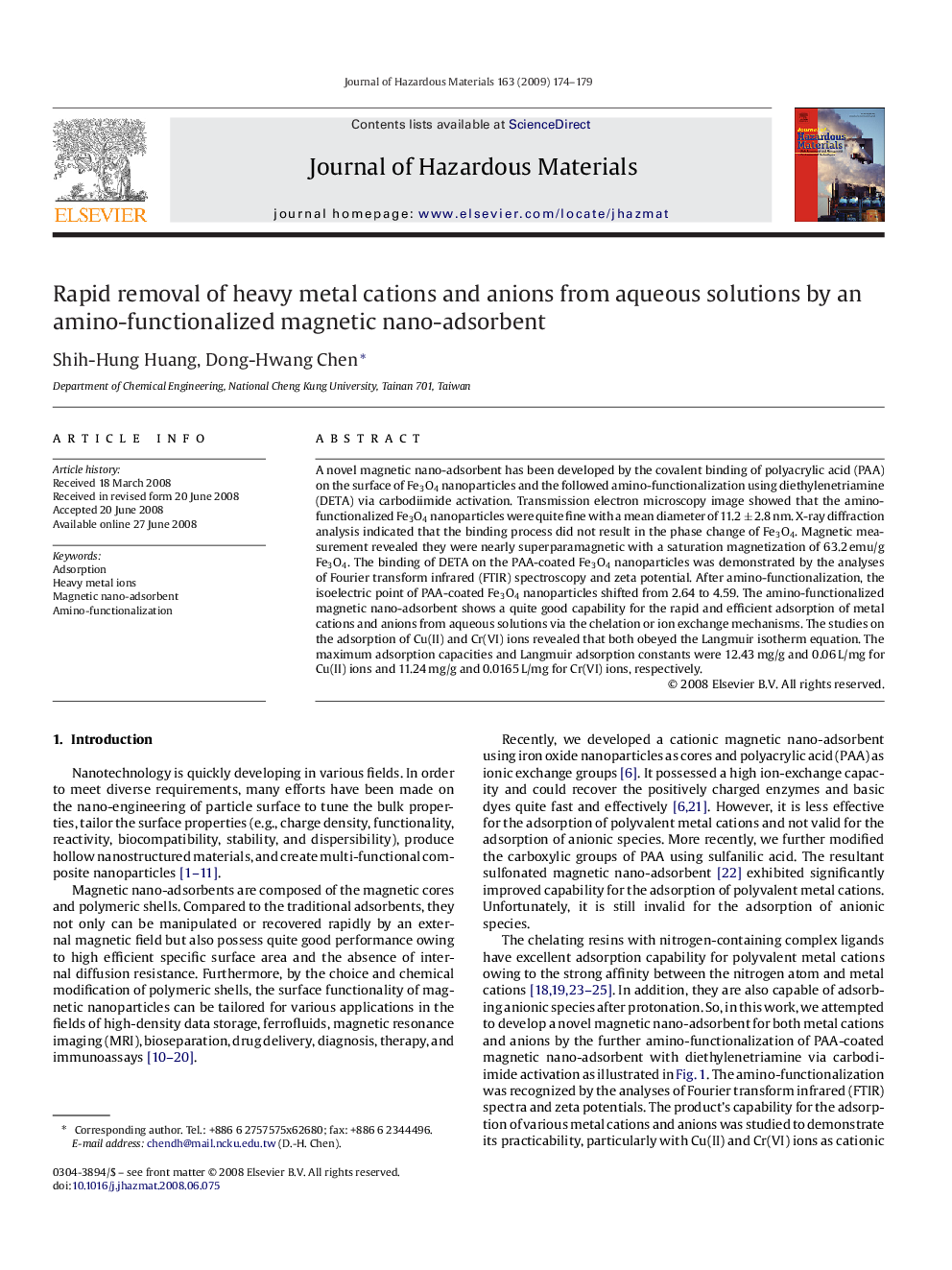| Article ID | Journal | Published Year | Pages | File Type |
|---|---|---|---|---|
| 581941 | Journal of Hazardous Materials | 2009 | 6 Pages |
Abstract
A novel magnetic nano-adsorbent has been developed by the covalent binding of polyacrylic acid (PAA) on the surface of Fe3O4 nanoparticles and the followed amino-functionalization using diethylenetriamine (DETA) via carbodiimide activation. Transmission electron microscopy image showed that the amino-functionalized Fe3O4 nanoparticles were quite fine with a mean diameter of 11.2 ± 2.8 nm. X-ray diffraction analysis indicated that the binding process did not result in the phase change of Fe3O4. Magnetic measurement revealed they were nearly superparamagnetic with a saturation magnetization of 63.2 emu/g Fe3O4. The binding of DETA on the PAA-coated Fe3O4 nanoparticles was demonstrated by the analyses of Fourier transform infrared (FTIR) spectroscopy and zeta potential. After amino-functionalization, the isoelectric point of PAA-coated Fe3O4 nanoparticles shifted from 2.64 to 4.59. The amino-functionalized magnetic nano-adsorbent shows a quite good capability for the rapid and efficient adsorption of metal cations and anions from aqueous solutions via the chelation or ion exchange mechanisms. The studies on the adsorption of Cu(II) and Cr(VI) ions revealed that both obeyed the Langmuir isotherm equation. The maximum adsorption capacities and Langmuir adsorption constants were 12.43 mg/g and 0.06 L/mg for Cu(II) ions and 11.24 mg/g and 0.0165 L/mg for Cr(VI) ions, respectively.
Related Topics
Physical Sciences and Engineering
Chemical Engineering
Chemical Health and Safety
Authors
Shih-Hung Huang, Dong-Hwang Chen,
